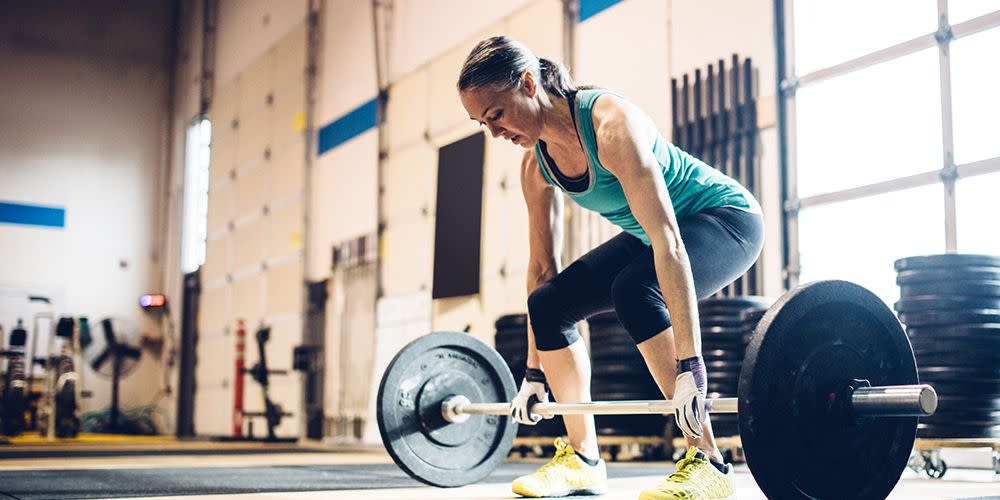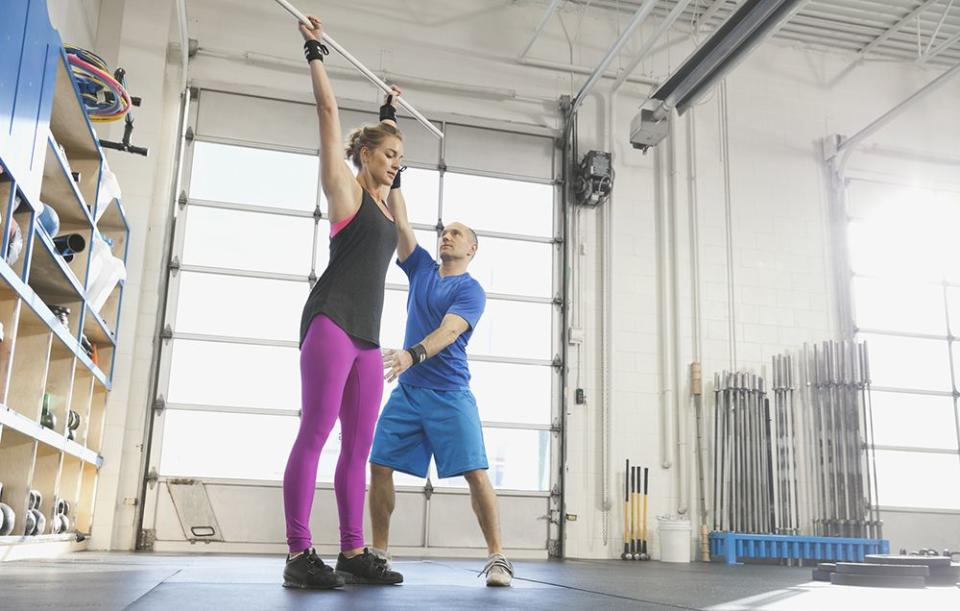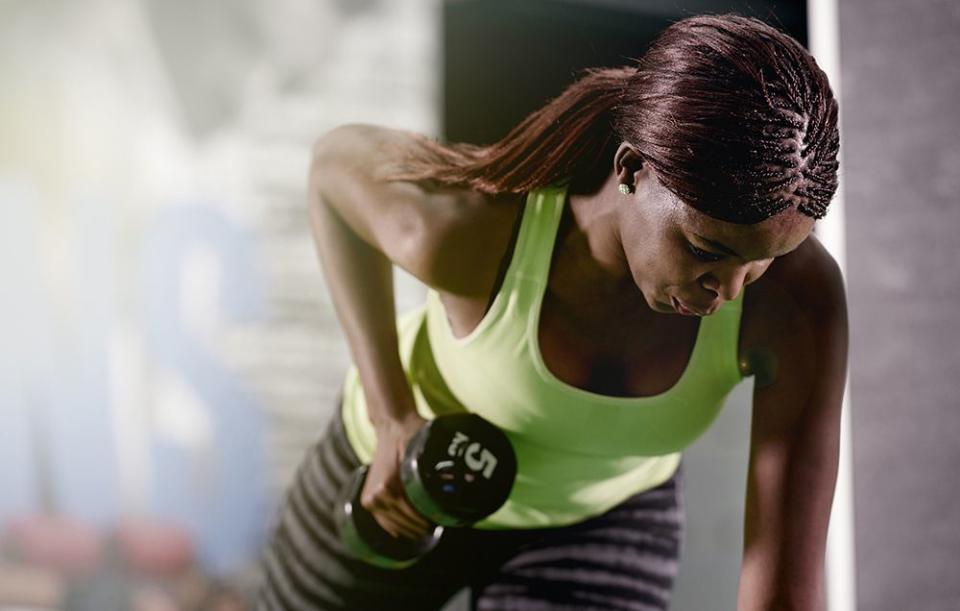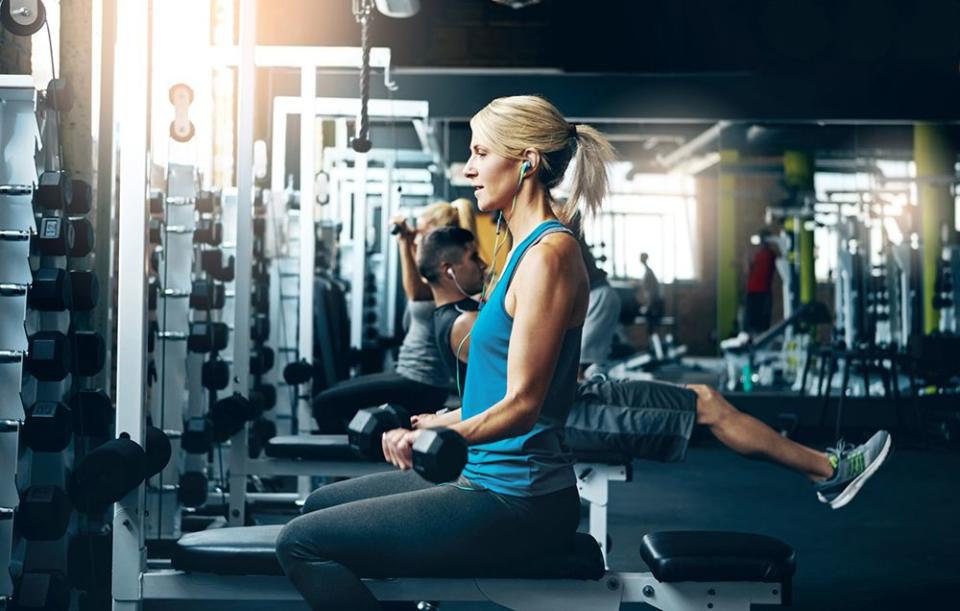If You’re Over 40 And About To Start Weight Lifting For The First Time, Here Are 5 Things You Need To Know

When Marian Cass of Long Island, New York, turned 50, her doctor gave her a prescription she wasn’t expecting: weight train twice a week.
“I have always been pretty fit for my age,” says the 63-year-old retired medical professional. “I walk at least five days a week, go to my favorite dance class on Saturday mornings, and swim every day in the summer.” While her doctor acknowledged the benefits of her preferred cardiovascular exercise, he said adding strength training to her routine would help boost her metabolism, strengthen her bones, and improve her balance—something that would help prevent falls as she aged.
(Transform your body with weights! These 10-15 minute workouts help you tighten and tone fast. Get Strong with Betina Gozo now!)
Cass started working out with a trainer twice a week and was almost immediately impressed with the results. “Within a month, I felt stronger, had way more energy, and was even fitting into dresses I hadn’t worn in years,” she says. “Now, years later, I still lift weights three times a week and have no plans to stop.”
MORE: How A 52-Year-Old Went From Not Being Able To Do A Push-Up To Winning The CrossFit Games
Cass’s results are fairly typical, too. According to countless studies, weight training offers incredible benefits, particularly as we age. But if like Cass, you’re about to start lifting for the first time, and you’re over 40, you shouldn’t just pick up a set of weights and go. Armed with the 5 pointers below, you’ll get better results and stay safe while you lift so you can make strength training a life long habit.
Learn proper form and stick to the basics.

Doing any exercise with poor form has the potential to cause an injury. However, when you’re performing an exercise with poor form while using weights, those injuries can be even more serious, says Rachel Straub, a certified strength and conditioning specialist and co-author of “Weight Training Without Injury.” To play it safe, Straub recommends starting with little to no weight (think: 2- to 5-pound dumbbells) and sticking with exercises like squats, deadlifts, lunges, and assisted pull-ups. Though these exercises are basic, they work multiple muscle groups and joints simultaneously, helping you make the most of your time at the gym. They also help you build baseline strength, which sets the foundation for lifting heavier weights and performing more targeted moves as you advance, says Spraul.
MORE: 5 People Who Became Trainers After 50
While watching instructional videos and reading articles can certainly help you learn proper form, Trinity Perkins, a certified personal trainer and performance nutrition specialist in Woodbridge, Virginia, suggests hiring a personal trainer to learn proper alignment. “Even if you only work with a trainer to teach you the basics, it can be very beneficial,” she says. “Not only will learning proper form from a pro help you prevent injury, but it’ll also help you see better results.” (Try this to firm up, lose weight, and feel amazing.)
Start slow.

If you’ve never picked up a weight before, your muscles will probably feel pretty sore after your first couple of strength-training sessions, says Perkins. “That post-workout pain can be a big deterrent when it comes to sticking with your weight training program,” she says. “To pace yourself, lift weights just two to three times a week when you first start out. That will give your body time to adjust to the new demands you’re placing on it.” Straub agrees, adding that it’s also important to avoid weight training on consecutive days. “Soreness takes time to subside,” she says. (Are your leg muscles super sore? Learn about the benefits of throwing your legs up on a wall every day. It's a super easy move with major benefits.)
MORE: 10 Mistakes You're Making After Your Workouts
Set realistic expectations.

Strength training is often lauded as the best way to get fit fast, yet Tyler Spraul, a certified strength and conditioning specialist and the head trainer at Exercise.com, says it’s crucial to think about the big picture—especially when you’re first starting out. If you’re focused on losing a certain amount of weight or dropping a few jeans sizes, there’s a good chance you’ll workout too aggressively, he says. “It’s much smarter to work out consistently for 45 minutes a few times a week than going all out and trying to ‘kill it’ every day at the gym,” says Spraul. “If you do that, the best case scenario is that you’ll end up being too sore or exhausted to get back to the gym until the following week. The worst case scenario is that you’ll end up getting hurt from trying to do too much, too fast.” (If you haven’t strength-trained in a while—or ever—here are the six best moves to get started.)
Oris Martin, a personal trainer and fitness director at Acts Retirement-Life Communities, adds that you probably won’t see muscle definition until six to eight weeks after starting your weight-training program. Keeping this in mind can help you set realistic expectations and not get discouraged.
Sculpt lean muscle with these do-anywhere moves that use a chair and your own body weight:
Set a schedule you’ll actually follow.

Whether you pencil your workouts into your calendar and think of them as mandatory meetings or make plans to hit the weight room with a friend, setting a schedule can go a long way towards making a new weight-training routine stick. “I like to work out in the morning, so I don’t have time to make excuses,” says Martin. “No matter what you do, though, choose a tactic that will inspire you to hold yourself accountable.”
MORE: How 8 Exercise Devotees Over 60 Stay Motivated To Work Out
Stay positive.

Perhaps you think you’ll hate lifting weights and you’re just doing it because your doctor told you it would benefit your health. Or maybe the more experienced people at the gym intimidate you. Whatever the reason, if you go into a new weight-training regimen with a negative attitude, it’s not going to serve you, says Shaun Zetlin, a New York City-based personal trainer. “Exercising is as much mental as it is physical,” he says. “The mind and body need to work as one functional unit during exercise to yield the best possible results. It’s crucial to believe in yourself and your physical abilities if you want to get results and enjoy the exercise.” Zetlin tells his clients to repeat a positive mantra when they start to doubt themselves. Something as simple as 'I know I can do this exercise' works great. “Positive thoughts are your fuel to succeed, even when you feel doubtful or physically fatigued,” he says.
MORE: The Only 9 Things You Really Need For Strength Training At Home (And None Cost A Fortune)
You Might Also Like

